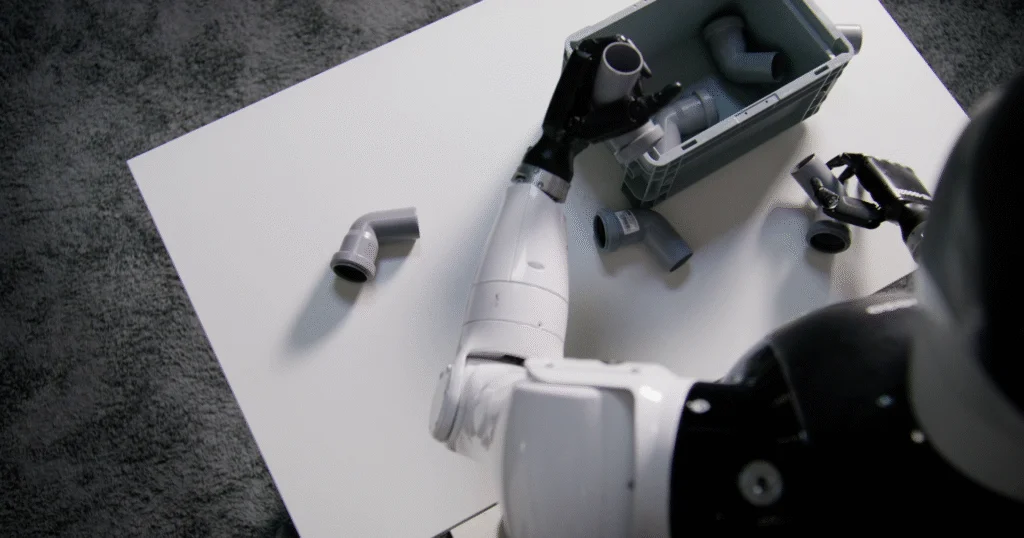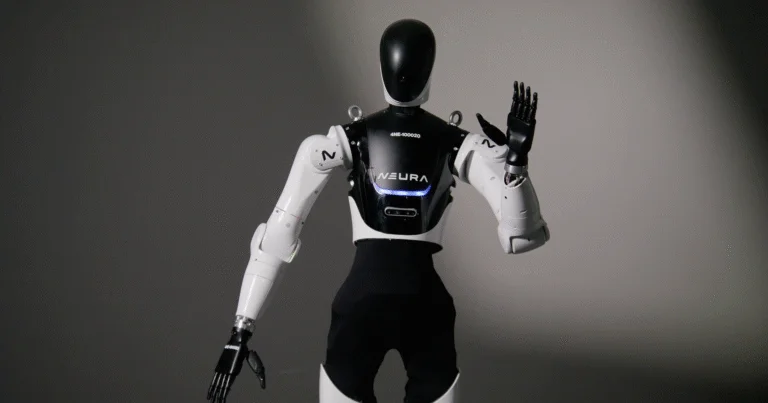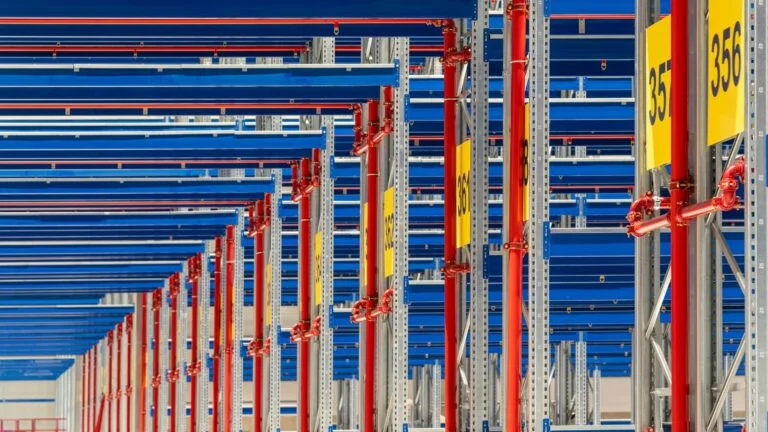Humanoid robots in logistics: science fiction today, reality tomorrow?
By Andre Kranke I 5 minute read I Photo: NEURA Robotics
05/11/2025
Humanoid robots have long been considered a vision of the future. But initial practical experience shows that the technology could also be used in logistics in the medium term.
Quick Read
Humanoid robotics refers to robots that are modeled on the human body in terms of shape and movement – typically with two arms, two legs, a torso, and a head. They are designed to perform tasks in environments that are designed for humans. Their sensors allow them to see, hear, and touch to a certain extent, while their software enables interaction and learning.
In addition, there is also anthropomorphic robotics, which focuses more on individual social characteristics, i.e., robots with selected human or animal characteristics such as facial features, limbs, or emotional behavior. Such elements are particularly important for applications in nursing or catering services, for example.

Human-like robots: USA and Asia leading the way in development
Humanoid robot prototypes are already capable of performing complex movements such as running, jumping, and navigating uneven terrain. This impressively demonstrates how the technology has advanced in recent years. In addition, “humanoids” are becoming increasingly adept at recognizing speech and gestures, analyzing facial expressions, and performing simple tasks such as grasping objects or sorting containers in defined environments.
Well-known models such as “Atlas” from Boston Dynamics, “Digit” from Agility Robotics, and “Figure 01” from Figure move on two legs, have two arms with a simple gripping hand, and are designed for use in industrial environments. The “humanoids” from these US suppliers weigh between 50 and 70 kilograms, are 1.50 to 1.75 meters tall, and can walk at a speed of 5 kilometers per hour. Their operating time is currently up to one hour, but this will continue to increase. Most suppliers in this rapidly growing market come from the US, China, India, and South Korea. As one of the few German and European suppliers, the Baden-Württemberg-based company Neura Robotics is working on keeping up with the global market with its “4NE1” model.
In the future, humanoid robots should be able to adapt very flexibly to changing tasks – without complex programming or infrastructure measures. They could then be used in existing logistics environments where humans also work, performing tasks such as lifting, sorting, or unloading.
As part of the “Future Lab” series, results from the Corporate Research & Development department are presented, which were developed in collaboration with specialist departments and branches as well as the DACHSER Enterprise Lab at the Fraunhofer IML and other research and technology partners.
Humanoid robot prototypes are already capable of performing complex movements such as running, jumping, and navigating uneven terrain.
Many challenges and high costs remain
Despite impressive progress, however, humanoid robots face three key technical challenges:
- Mobility and balance: Walking upright requires complex stability mechanisms to prevent falls – especially in unfamiliar environments.
- Power supply: Battery life is currently limited. The goal is at least four to five hours of operation with fast charging times.
- Sensors & software: The combination of AI, sensors, and control systems must be further improved to enable reliable and autonomous interactions with humans. Another major challenge is “feeling,” for example, to be able to safely pick up delicate objects.
Acquisition and operating costs are also still an obstacle at present. High material and development costs make humanoid robots economically unattractive for many applications. However, mass production could significantly reduce investment costs in the coming years.
Analysts expect humanoid robots to be increasingly used in logistics from 2030 onwards, especially in areas with high staff shortages and ergonomically demanding tasks. Technological advances in AI, sensor technology, and hardware could further drive this development.
Analysts expect humanoid robots to be increasingly used in logistics from 2030 onwards.
Acceptance and efficiency issues
But in addition to economic efficiency and technical functionality, two other aspects will determine whether humanoid robots actually find their way into logistics: First, human colleagues must be persuaded to accept working with human-like machines in the future. For example, a humanoid must never appear threatening to humans due to its size, voice, or movements.
And the second question, which should always be answered first: Can the task be accomplished much more efficiently with normal robotics and automation? Does a human-like machine actually make sense?
There are many aspects that still need to be investigated and answered by research in the coming years and proven in practice, but humanoid robots could find their way into the world of work and logistics in the foreseeable future.
You can get an impression of the developments at Boston Dynamics and NEURA Robotics on YouTube.






